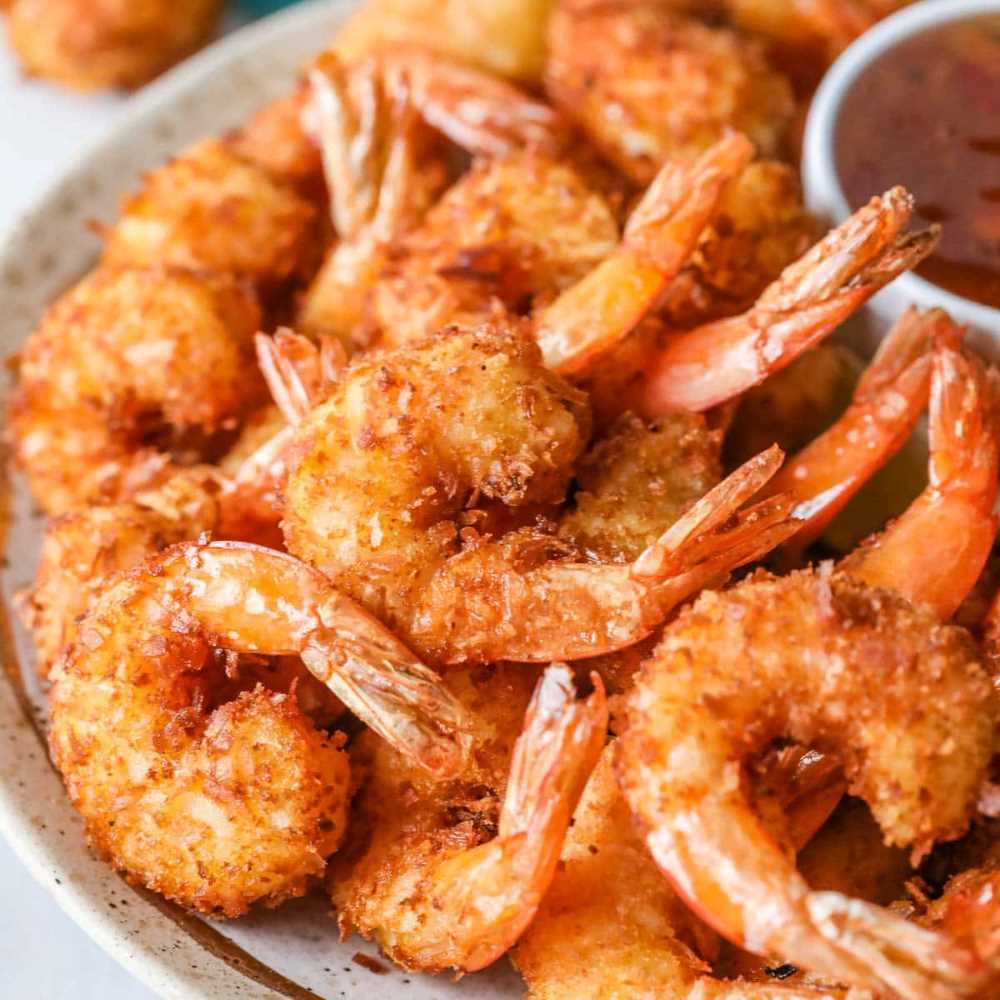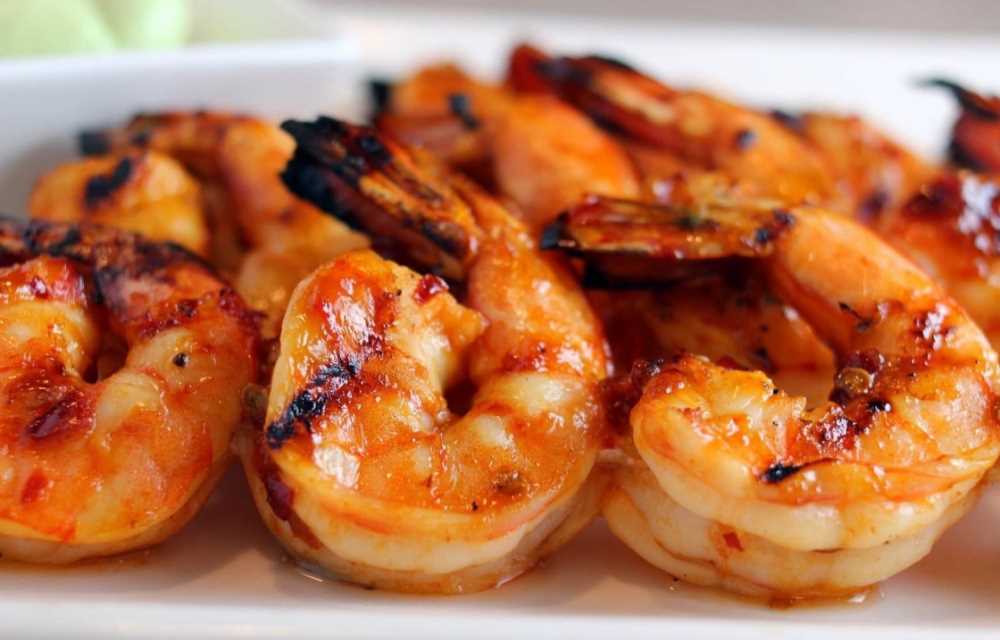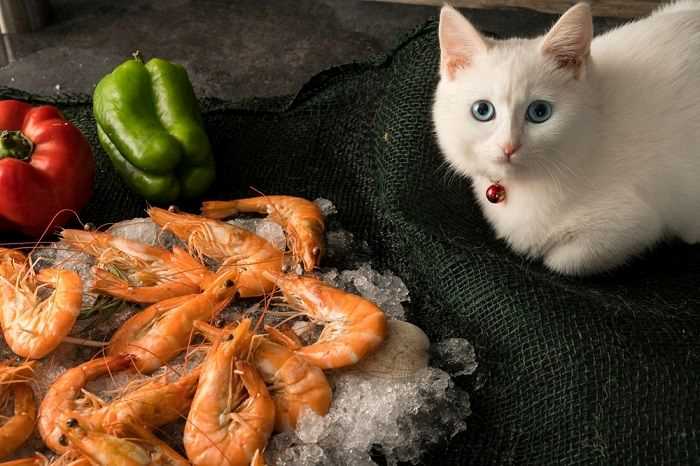How to Cook Shrimp For Cats

Ever wondered if your cat would enjoy a little seafood treat? Well, we’re here to guide you on how to cook shrimp for cats. Even though, cats love their usual food, but adding something special, like shrimp, can make their day.
In this guide, we’ll help you understand how to prepare shrimp for cats so that it’s not only tasty but also good for them. Cats need different things in their food compared to us, so it’s important to choose the right shrimp and cook it in a way that keeps it healthy.
Can my cat eat cooked shrimp?
Absolutely! Many cats can enjoy cooked shrimp as a tasty and occasional treat. Before sharing this seafood delight with your feline friend, it’s crucial to ensure that the shrimp is plain and free from any seasonings, additives, or preservatives.
Cats, being obligate carnivores, thrive on protein-rich diets, and shrimp can offer a flavorful source of animal protein. When cooked properly—boiled or steamed—shrimp retains its nutritional value, providing a delicious and healthy addition to your cat’s diet. However, moderation is key. While a small amount of cooked shrimp can be a delightful treat, it should not replace their regular cat food.
Always be mindful of any allergic reactions or sensitivities your cat may have, and consult your veterinarian if you have any concerns. So, in moderation and with attention to preparation, treating your cat to cooked shrimp can be a safe and enjoyable experience.
Benefits of Cooking Shrimp For Cats

Treating your feline friend to shrimp comes with a variety of benefits, making it a delightful addition to their diet:
- High-Quality Protein Source: Shrimp is rich in high-quality animal protein, meeting the essential dietary needs of cats as obligate carnivores.
- Variety in Nutrition: Adding shrimp to your cat’s diet provides a change of taste and texture, offering a diverse nutritional profile beyond their regular cat food.
- Omega-3 Fatty Acids: Shrimp contains omega-3 fatty acids, promoting a healthy coat and supporting overall skin health in cats.
- Dental Health: The act of chewing on shrimp can contribute to good dental health by helping to reduce plaque and tartar buildup.
- Enriching Treats: Incorporating shrimp into homemade cat treats can make snack time more exciting, fostering a positive bond between you and your feline companion.
Remember, while there are benefits, moderation is essential to prevent overfeeding and to maintain a balanced diet for your cat. Always observe your cat for any adverse reactions and consult with your veterinarian for personalized dietary advice.
Choosing the Right Shrimp to Cook for Cats
Choosing the right shrimp is pivotal when preparing a tasty and safe treat for your cat. Consider these factors for a purr-fect selection:
- Freshness Matters: Opt for fresh shrimp whenever possible, ensuring it is free from any off-putting odors or discoloration.
- Avoid Additives: Select plain, unseasoned shrimp without additives or preservatives. Cats are sensitive to certain seasonings, and plain shrimp helps prevent digestive issues.
- Steer Clear of Shells and Tails: To make the shrimp easy to eat and prevent choking hazards, remove shells and tails before cooking.
- Frozen Options: If fresh shrimp is unavailable, choose high-quality frozen shrimp without any added ingredients. Thaw it properly before preparing.
- Sustainable Sourcing: Consider shrimp from sustainable sources to promote both environmental responsibility and a healthier treat for your cat.
By paying attention to these considerations, you ensure that the shrimp you cook for your cat is not only delicious but also safe and beneficial for their overall well-being.
How to Cook Shrimp for Cats
Cooking shrimp for your feline companion involves careful consideration of both preparation and presentation. Follow these detailed steps to create a safe and delectable shrimp treat for your cat, starting with the cooking methods:
Cooking Methods:
Boiling Method:
- Bring a pot of plain water to a gentle boil.
- Add the peeled shrimp to the boiling water.
- Simmer for 2-3 minutes until the shrimp turn opaque.
- Remove the shrimp promptly and let them cool.
Steaming Method:
- Set up a steamer basket over a pot of water.
- Place the peeled shrimp in the basket.
- Steam for approximately 4-5 minutes until the shrimp are fully cooked.
- Allow the shrimp to cool thoroughly before serving.
Preparation Steps:
Selecting Shrimp:
- Choose fresh, unseasoned shrimp or high-quality frozen shrimp without additives.
- Look for a mild sea scent, firm texture, and no discoloration.
Thawing (if frozen):
- Thaw frozen shrimp safely in the refrigerator overnight to preserve texture and taste.
- Avoid using a microwave, which may affect the shrimp’s quality.
Shell Removal:
- Peel the shrimp, removing both the shell and tail to prevent choking hazards.
- Ensure the shrimp is clean and free from any debris.
Cleaning:
- Rinse the shrimp under cold running water to remove ice crystals.
- Pat them dry with a paper towel to prepare for cooking.
Post-Cooking Steps:
Cooling:
- Allow the cooked shrimp to cool completely before serving to avoid burns.
- A cooled shrimp is more palatable for your cat.
Dicing (Optional):
- Consider dicing the shrimp into smaller, bite-sized pieces for cats who prefer it.
- This step enhances the ease of consumption.
Serving Size:
- Determine the appropriate portion size based on your cat’s size and weight.
- Keep treats to no more than 10% of their daily caloric intake.
Observation:
- Introduce shrimp gradually and monitor your cat for any adverse reactions.
- Signs of allergies or sensitivities may include vomiting, diarrhea, or behavioral changes.
- Consult your veterinarian promptly if any issues arise.
By meticulously following these steps, you can ensure that the shrimp treat you prepare for your cat is not only a culinary delight but also a safe and healthful addition to their diet.
Serving Size and Frequency

Determining the right serving size and frequency when treating your cat to shrimp is crucial for their overall well-being. Cats, like humans, benefit from moderation. Consider your cat’s size, weight, and individual dietary needs to establish an appropriate serving size. Treats, including shrimp, should constitute no more than 10% of their daily caloric intake to maintain a balanced diet.
While the occasional shrimp treat can be a delightful addition to their routine, it’s essential to avoid overfeeding. Regularly monitor your cat’s weight and adjust treat frequency accordingly. Remember, a well-balanced diet, coupled with mindful treat-giving, contributes to a healthy and contented feline friend. If you have concerns about your cat’s diet or are unsure about suitable portion sizes, consult with your veterinarian for personalized guidance.
Signs of Allergies or Sensitivities
Being attentive to signs of allergies or sensitivities in your cat after introducing shrimp to their diet is paramount. Watch for potential reactions such as vomiting, diarrhea, itching, or changes in behavior. Allergies can manifest differently in each cat, so be vigilant for any unusual responses.
If you notice adverse effects, it’s crucial to consult your veterinarian promptly. They can provide insight into whether these reactions are linked to the shrimp or indicate other health concerns. Remember, while shrimp can be a tasty and nutritious addition to your cat’s diet, individual sensitivities vary.
Monitoring their well-being ensures a positive treat experience and maintains their overall health and happiness. If in doubt, seeking professional advice ensures a tailored approach to your cat’s dietary needs.
Creative Shrimp Treat Recipes
Elevate your cat’s treat game with creative shrimp recipes that add variety to their palate. Try these innovative ideas for a delightful feline feast:
- Shrimp and Catnip Bites:
- Combine finely chopped shrimp with catnip.
- Form small, bite-sized balls and refrigerate until firm.
- Serve as a playful and aromatic treat.
- Shrimp and Tuna Feline Feast:
- Mix cooked shrimp with flaked tuna.
- Create small portions and serve as a flavorful seafood duo.
- Ideal for cats who enjoy a surf-and-turf experience.
- DIY Shrimp Cat Treats:
- Create a simple mixture of cooked, mashed shrimp and cat-friendly dry food.
- Shape into small treats or use a cookie cutter for added flair.
- Bake or refrigerate until set, providing a crunchy option.
These recipes not only engage your cat’s senses but also offer a nutritious twist to their treat routine. Remember to moderate portions and tailor ingredients to your cat’s preferences for a truly indulgent experience.
What to Look Out When Cooking Shrimp For Cats
Cautionary notes and considerations are crucial when incorporating shrimp into your cat’s diet. Ensure a safe and enjoyable treat experience with these valuable tips:
- High Cholesterol Content:
- Shrimp can be high in cholesterol, so moderation is key.
- Limit the frequency of shrimp treats to prevent excessive cholesterol intake.
- Risk of Overfeeding:
- While shrimp can be a healthy addition, overfeeding can lead to obesity.
- Monitor your cat’s overall caloric intake, considering both regular meals and treats.
- Alternatives for Variety:
- Introduce variety in treats to avoid reliance solely on shrimp.
- Explore alternative protein sources or cat-friendly fruits and vegetables.
- Allergic Reactions:
- Watch for signs of allergies or sensitivities.
- If your cat displays adverse reactions, consult with a veterinarian promptly.
- Consult with Veterinarian:
- Seek professional advice for personalized dietary guidance.
- Your veterinarian can offer insights into your cat’s specific needs and potential risks.
These considerations ensure that while shrimp can be a delightful treat, it is integrated into your cat’s diet responsibly, contributing to their overall health and happiness.
Conclusion
In summary, cooking shrimp for your cat, when done thoughtfully, can be a delightful and healthful addition to their diet. From choosing the right shrimp and employing cat-friendly cooking methods to monitoring serving sizes and watching for potential allergies, a well-rounded approach ensures a positive experience. Creative shrimp treat recipes add variety, enhancing the joy of treat time.
However, be cautious of high cholesterol content and the risk of overfeeding. By heeding these considerations, you can offer your cat a tasty and balanced treat, contributing to their overall happiness and well-being. Always consult with your veterinarian for personalized advice on your cat’s dietary needs.
Additional Resources
Here are some more articles you can read to help you explore more food options for your cat:


